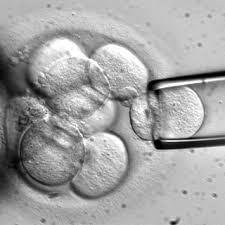 Researchers won’t be content until they can create babies in a laboratory—trying to rival God as being the source of human life.
Researchers won’t be content until they can create babies in a laboratory—trying to rival God as being the source of human life.
Astonishingly, four research groups recently released papers showing that they’ve created hollow balls of cells that closely resemble human embryos.
Some involved the use of embryonic stem cells obtained from aborted children. Others reprogrammed human skin or blood cells known as induced pluripotent cells (iPS).
Researchers said there are near human embryos at the stage when an embryo usually implants in the womb—known as blastocysts. The experimental embryos are dubbed “blastoids.”
The blastoids appear to have enough differences from naturally formed embryos to prevent them from ever becoming a viable baby, but they appear to be awfully close.
“I’m sure it makes anyone who is morally serious nervous when people start creating structures in a petri dish that are this close to being early human beings,” Dr. Daniel Sulmasy, a bioethicist at Georgetown University told NPR.
“They’re not quite there yet, and so that’s good. But the more they press the envelope, the more nervous I think anybody would get that people are trying to sort of create human beings in a test tube,” Sulmasy added.
The U.S. Embryo Experimentation Loophole
“This work is absolutely unnerving for many people because it really challenges our tidy categories of what life is and when life begins,” explained Insoo Hyun, a bioethicist at Case Western Reserve University and Harvard University.
Most of what scientists know about early development comes from the immoral practice of studying human embryos up to 14 days of life, after which they are destroyed. The limit is a law in many countries, but only a guideline in the United States.
If successful, these misguided experimenters think their almost human embryos will offer a way around the rule.
Their hope is that they will gain a “window” into a crucial time in human development, and an opportunity to better understand pregnancy loss and infertility without experimenting on actual human embryos.
While stem cells can reveal a lot about how organs form, research so far has provided little insight into the complex interplay between the developing embryo and the lining of the womb required to establish and maintain a pregnancy.
This period, covering the first few weeks after implantation, is sometimes referred to as the “black box” of development, since it’s extremely difficult to access reproductive material at this early stage.
Although, many correctly see red flags.
The Ethical Debate
“We could just keep growing these sort of humans in a test tube and not even considering the fact that they’re so close to being human, right? said Kristin Matthews, a fellow in science and technology policy at Rice University.
“I guess I watch too much sci fi, because I find it really disturbing.”
If this wasn’t bad enough, researchers at the Salk Institute for Biological Sciences in La Jolla, California, have created embryos that are a mix of human and monkey cells.
The alleged goal is to find new ways to produce organs for people who need organ transplants.
Commenting on this development, Hyun said: “I don’t see this type of research being ethically problematic. It’s aimed at lofty humanitarian goals.”
Others disagree. Matthews said: “My first question is why? I think the public is going to be concerned, and I am as well, that we’re just kind of pushing forward with science without having a proper conversation about what we should or should not do.”
A major concern is that someone could try to take this work further and make a baby out of an embryo made this way.
Specifically, critics are concerned that human cells could become part of the developing brain of such an embryo and the brain of the resulting creature.
“Should it be regulated as a human because it has a significant proportion of human cells in it? Or should it be regulated just as an animal? Or something else?” Matthews added.
Another concern is that using human cells in this way could produce animals that have human sperm and eggs.
“Nobody really wants monkeys walking around with human eggs and human sperm inside them,” explained Hank Greely, a Stanford University bioethicist. “Because if a monkey with a human sperm meets a monkey with human eggs, nobody wants a human embryo inside a monkey’s uterus.”
Further Unethical Experimentation Expected
To make matters worse, the Biden administration recently announced that it has overturned restrictions put in place by President Trump that limited federal funding for experiments using aborted baby body parts.
In response to the move, the Department of Health and Human Services (HHS) said “there are no new ethical issues that require special review,” and that it will no longer maintain its ethics advisory board.
“Instead of using ethical and effective alternatives, Biden is choosing to reinstate a policy that traffics in the grizzly remains of what would have been our next generation,” charged Tony Perkins, President of the Family Research Council.
All of these developments should outrage every pro-life advocate who values the sanctity and dignity of human life. Whatever these diabolical experiments produce is wrong and a direct attack on the Personhood of pre-born children.
Please contact your Congressional representatives and demand that they put an end to immoral human experimentation and stop federal funding projects that use cells obtained from aborted children and causing their death.
Sources: npr.org; bioedge.org; theconversation.com; lifesitenews.com.
Wayne Dubois
Georgia Right to Life
Media Relations Advisor
